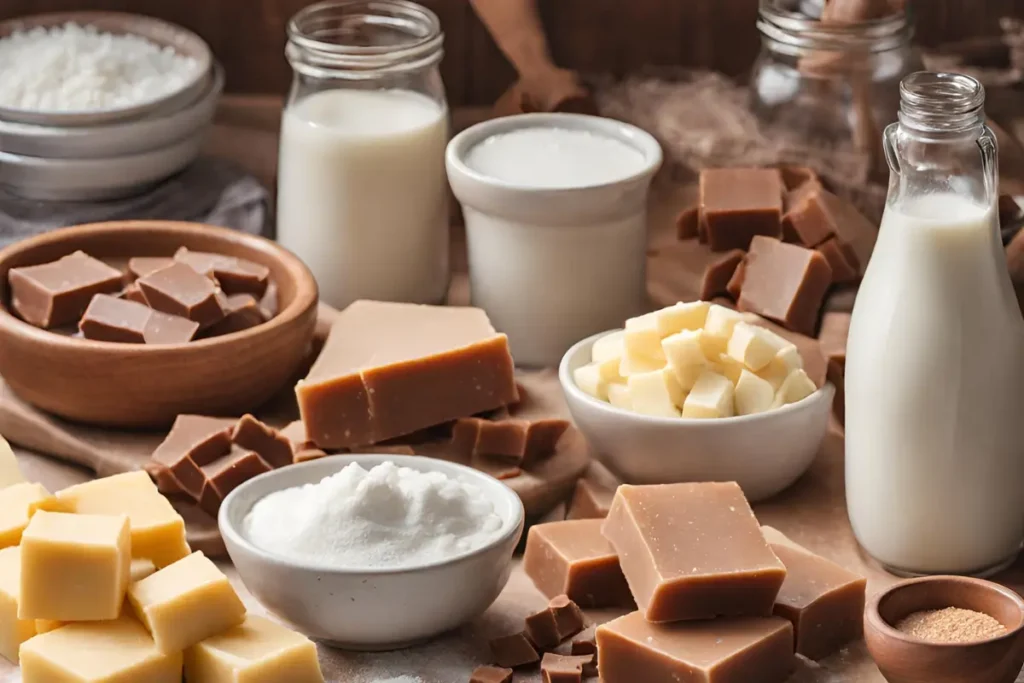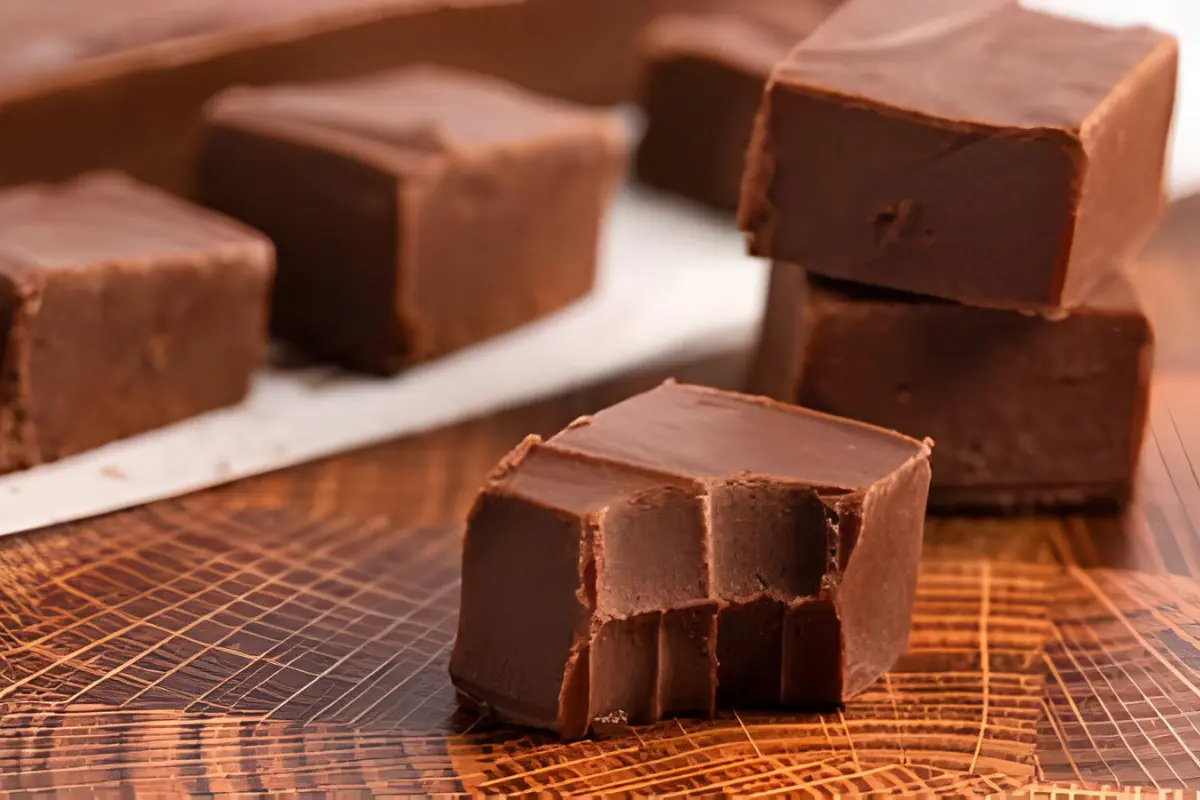Achieving a smooth fudge texture is an art that beckons the sweet enthusiast to a world of precision, patience, and passion. This journey towards confectionery excellence, paved with trials and triumphs, is not merely about mixing ingredients; it’s a meticulous dance of chemistry and timing. Mastering the secrets to a smooth fudge texture invites not only a deep dive into the nuances of fudge-making but also a celebration of the textures and flavors that make homemade fudge a true delight. Let’s embark on this flavorful quest to ensure every piece of fudge you create is nothing short of perfection.

Introduction to Fudge Making
Ah, fudge! That creamy, melt-in-your-mouth delight that evokes memories of holiday gatherings and cozy afternoons. The allure of crafting such a treat at home is strong, yet the path to perfection is fraught with potential pitfalls. Ever found yourself asking, why did my fudge turn out like caramel? Well, you’re certainly not alone. This sweet conundrum is a common hurdle for many aspiring confectioners.
Fudge, in its ideal form, is a symphony of sugar, milk, and butter, brought together under the watchful eye of precision and patience. The journey from ingredients to indulgence is a delicate one, where each step plays a crucial role in shaping the final product. Unlike its cousin caramel, fudge boasts a soft, creamy texture that’s achieved through a meticulous balance of chemistry and temperature control.
So, why does fudge sometimes take a detour, ending up as caramel instead? The answer lies in the intricate dance of sugar crystals, heat, and stirring. Getting fudge just right is akin to conducting an orchestra, where timing, understanding, and technique must come together in harmony.
As we embark on this exploration, we’ll uncover the reasons behind fudge’s tendency to mimic caramel, diving deep into the science that separates these two sweet treats. By demystifying the processes involved, we’ll equip you with the knowledge and skills to navigate the challenges of fudge-making, ensuring your next batch is nothing short of spectacular. Ready to unravel the mysteries of your confectionery misadventures? Let’s get stirring!

The Science Behind Fudge and Caramel
Peering into the world of sweets, one quickly realizes that fudge and caramel, while siblings in the realm of confections, diverge significantly in their journey from the pot to the palate. The distinction between these two delights lies not just in their flavor profiles but in their structural makeup and the reactions that forge their textures. Let’s dive into the fascinating science that sets them apart, shall we?
Ingredients and Their Roles
At their core, both fudge and caramel share a foundation of sugar, butter, and milk or cream. However, the proportions and treatment of these ingredients mark the fork in the road leading to their separate destinations. Fudge calls for a careful balance, with sugar and milk dominating the mix, while butter adds richness and creaminess. Caramel, on the other hand, often leans heavier on butter and cream, resulting in a smoother, more fluid consistency.
The Chemistry of Cooking Sugars
The transformation of simple ingredients into fudge or caramel is nothing short of alchemical. Temperature plays the lead role in this performance, dictating the stage at which sugar’s structure breaks down and reforms. For fudge, the magic happens when the mixture reaches the soft ball stage, between 235°F and 245°F. This precise temperature range allows sugar crystals to form just so, creating fudge’s characteristic texture.
In contrast, caramel’s journey involves cooking the sugar until it undergoes caramelization, typically beyond 320°F. This process breaks down sugar’s molecules, forming new compounds that give caramel its deep color and rich flavor. Unlike fudge, the goal here isn’t to foster a network of sugar crystals but to achieve a smooth, flowing consistency. “For more on the fascinating science that dictates fudge’s final texture, delve into this exploration of Sugar Crystallization in Candy Making.
Understanding these fundamental differences sheds light on the delicate balance required in fudge-making. Stray but a little in temperature or proportion, and you find yourself in caramel territory, delicious though unintended. This insight into the roles of ingredients and the chemistry of cooking sugars is your first tool in troubleshooting fudge that’s taken a caramel-like detour. As we venture further, keep these principles in mind, for they are the compass by which we’ll navigate the sweet seas of confectionery.
Troubleshooting Your Fudge
Navigating the path to perfect fudge is akin to walking a tightrope, where balance and precision are paramount. Even the slightest misstep can send your confectionery creation veering towards a caramel-like consistency. But fear not! Identifying common pitfalls is the first step in mastering the art of fudge-making. Let’s delve into the usual suspects that might be transforming your fudge into an unintended caramel treat.
Insufficient Cooking Time
Patience is a virtue, especially in the realm of sweets. An undercooked fudge mixture often lacks the opportunity to reach the crucial soft ball stage, where sugar crystals begin to form appropriately. This premature halt in cooking can result in a mixture that’s too soft and resembles caramel in texture. The key? Use a candy thermometer to ensure your fudge reaches the desired temperature, avoiding the temptation to cut the cooking process short.
Too Much Liquid
Fudge’s texture is a delicate balance between liquid and sugar. An excess of liquid can sabotage this equilibrium, preventing the sugar crystals from setting properly and leading to a too-soft, caramel-like consistency. Measuring ingredients with precision is not just recommended; it’s essential. A keen eye on the ratio of liquid to sugar will help maintain the perfect consistency for your fudge.
Stirring Issues
The act of stirring, seemingly simple, plays a critical role in the formation of fudge. Stir too soon or too often, and you risk encouraging the formation of large sugar crystals, leading to a grainy texture. On the flip side, inadequate stirring might not distribute the heat evenly, affecting the texture and consistency. The trick lies in stirring at the right moments — after the sugar has dissolved and again once the mixture has cooled slightly, to encourage smooth, small crystals.
Temperature Mismanagement
As we’ve touched upon, temperature is the conductor of the fudge-making symphony, guiding each ingredient to its proper place and state. Fluctuations in temperature, whether too high or too low, can have a dramatic impact on the outcome. Overheating can push the mixture into caramel territory, while not heating enough might leave you with a soft, unset concoction. A reliable candy thermometer is your best friend here, ensuring you hit the sweet spot, temperature-wise.
Troubleshooting your fudge-making process with these considerations in mind brings you closer to achieving that dreamy, creamy confection every time. Remember, perfection in fudge-making comes not only from following a recipe but from understanding the why and how behind each step. Armed with this knowledge, you’re well on your way to bidding farewell to unintentional caramel outcomes, welcoming in their stead the sublime texture and taste of homemade fudge.
Perfecting Your Fudge Making
Mastering the art of fudge-making is akin to unlocking a sweet secret, one that once discovered, rewards you with endless delights. Armed with the knowledge of common pitfalls and the science behind fudge, you’re now poised to refine your technique. Let’s explore the corrective measures and tips that can elevate your fudge from good to sublime, ensuring a perfect batch every time.
Precision in Ingredients Measurement
The cornerstone of exceptional fudge lies in the accuracy of your measurements. The delicate balance between sugar, milk, and butter cannot be overstated; even a slight deviation can alter the final texture. Digital scales are invaluable here, offering precision that cup measurements cannot match. Remember, in the realm of confectionery, precision is not just a practice but a principle. For a deeper understanding of what makes fudge truly exceptional, delving into resources such as What is the Secret to Good Fudge? can offer invaluable insights.
Monitoring Cooking Temperatures
The path to perfect fudge is paved with precise temperature control. The use of a candy thermometer cannot be recommended enough. It’s not merely a tool but your guide through the critical stages of fudge making. By closely monitoring the temperature, you ensure that the mixture reaches the soft ball stage, setting the stage for fudge that’s just right.
Timing Your Stirring
Stirring, a simple yet impactful act, must be timed with care. Begin only once the sugar has fully dissolved and then cease until the boiling phase is complete. This discipline in stirring is crucial for promoting the formation of small, smooth sugar crystals, ensuring your fudge has that coveted creamy texture. Patience here is not just a virtue but a necessity.
Testing for Doneness
Determining when your fudge is ready to come off the heat can be a moment filled with anticipation. The soft ball test, a traditional yet effective method, involves dropping a small amount of fudge into cold water. If it forms a soft ball, your fudge is ready. This test, alongside your trusty thermometer, ensures that you achieve the perfect consistency every time, eliminating the guesswork from the equation.
Perfecting your fudge-making skills is a journey of discovery, experimentation, and, above all, joy. Each batch, with its unique nuances, brings you closer to achieving the pinnacle of confectionery excellence. By embracing these corrective measures and tips, you stand on the threshold of a world where every piece of fudge is a testament to your craftsmanship, a slice of sweetness that transcends the ordinary. So go forth, armed with precision, patience, and passion, and let your fudge-making adventure unfold
Frequently Asked Questions
Fudge making, with its rich history and deep culinary roots, often brings to light a myriad of questions. These inquiries range from troubleshooting to curiosity about the transformation of simple ingredients into something so delightfully complex. Let’s tackle some of the most common questions that bubble up in the minds of fudge aficionados.
Why did my fudge not set?
One of the most heart-sinking moments in a confectioner’s journey is peering into the pan only to find a fudge that refuses to firm up. The culprit behind this all-too-common issue often lies in not reaching the correct temperature during the cooking process. Remember, fudge needs to hit the soft ball stage (between 235°F and 245°F) to set properly. Investing in a reliable candy thermometer can turn the tide, ensuring your fudge sets to perfection.
Can I fix fudge that’s too soft?
Don’t despair if your fudge has turned out softer than anticipated; it’s not the end of the road. One approach to salvaging your creation is to return the mixture to the heat, adding a bit more milk, and then recooking it to the soft ball stage. It requires a careful eye and a bit of patience, but it’s often possible to coax your fudge back to the desired consistency. For further guidance on this matter, consider consulting Why is My Fantasy Fudge Too Soft?, which offers additional perspectives on rescuing soft fudge.
How do I avoid grainy fudge?
Ah, the grainy texture — the bane of smooth fudge lovers everywhere. This textural misstep is typically the result of sugar crystals forming too early or too large. To sidestep this pitfall, ensure that all sugar is dissolved before bringing the mixture to a boil, and avoid stirring the mixture once it’s boiling. Additionally, letting the fudge cool slightly before stirring can promote the formation of small, desirable crystals.
Tackling these FAQs head-on not only broadens your confectionery knowledge but also enhances your problem-solving arsenal. Whether it’s wrestling with setting issues or battling graininess, the answers to these questions pave the way to more successful fudge-making endeavors. Remember, each batch of fudge is a learning experience, one that brings you closer to achieving the perfect blend of flavor, texture, and sweetness
Mastering Fudge Consistency
Achieving the perfect consistency in fudge is an art that many strive for but few master. This journey towards confectionery excellence is not just about following recipes; it’s about understanding the fine balance that results in a smooth fudge texture. Beyond fundamental techniques and troubleshooting strategies, advanced tips can elevate your fudge to a level of perfection that delights the palate.
Experimenting with Flavors and Textures
Diving into the realm of fudge making opens up a world of creative possibilities. Don’t shy away from experimenting with a variety of flavors and textures. Incorporating nuts, dried fruits, or swirls of chocolate can not only add depth to your fudge but also introduce delightful contrasts in texture. Each addition has the potential to transform your fudge, making each bite a new discovery. For those eager to dive into the world of fudge variations, this Fantasy Fudge Recipe offers a delightful example of how simple tweaks can lead to mouthwatering results.
Troubleshooting Texture Problems
Achieving a smooth fudge texture requires a keen understanding of the fudge-making process. If your fudge is too soft or too hard, it can impact the desired consistency. Paying attention to the moisture content and cooking temperature is crucial for a smooth fudge texture. Remember, the goal is to find the right balance that ensures a smooth fudge texture every time.
Mastering the smooth fudge texture is about more than just recipes; it’s about embracing the science and creativity of confectionery. Each ingredient, temperature adjustment, and stirring technique plays a pivotal role in achieving the ideal smooth fudge texture. So, as you refine your fudge-making skills, focus on the nuances that contribute to that perfect consistency.
Wrapping Up Your Fudge Adventure

As our journey through the art of fudge making draws to a close, it’s essential to reflect on the path we’ve traversed. From understanding the science that differentiates fudge from caramel, navigating through common pitfalls, to perfecting the techniques that ensure a sublime texture, we’ve explored the multifaceted world of this beloved confectionery. Fudge making is not just a culinary process; it’s a craft, one that requires patience, precision, and a touch of creativity.
The adventure of fudge making is both rewarding and challenging, filled with moments of triumph and instances of learning. Remember, the journey to perfection is iterative, where each batch brings you closer to mastering the nuances of this sweet art. Embrace each experience, whether successful or less so, as an opportunity to grow and refine your skills.
Armed with the insights and techniques shared throughout this guide, you’re now equipped to embark on your fudge-making endeavors with confidence. Experiment with flavors, textures, and ingredients, always seeking to push the boundaries of what you can create. Share your creations with friends and family, spreading the joy and warmth that only homemade fudge can bring.
In the end, the essence of fudge making lies in the joy of creation, the satisfaction of overcoming challenges, and the delight of sharing your sweet masterpieces. So, keep stirring, keep experimenting, and most importantly, keep enjoying the delicious rewards of your efforts. Your fudge-making adventure may have started here, but it’s far from over. It’s an ongoing journey of discovery, one that’s as sweet as the fudge you create.

